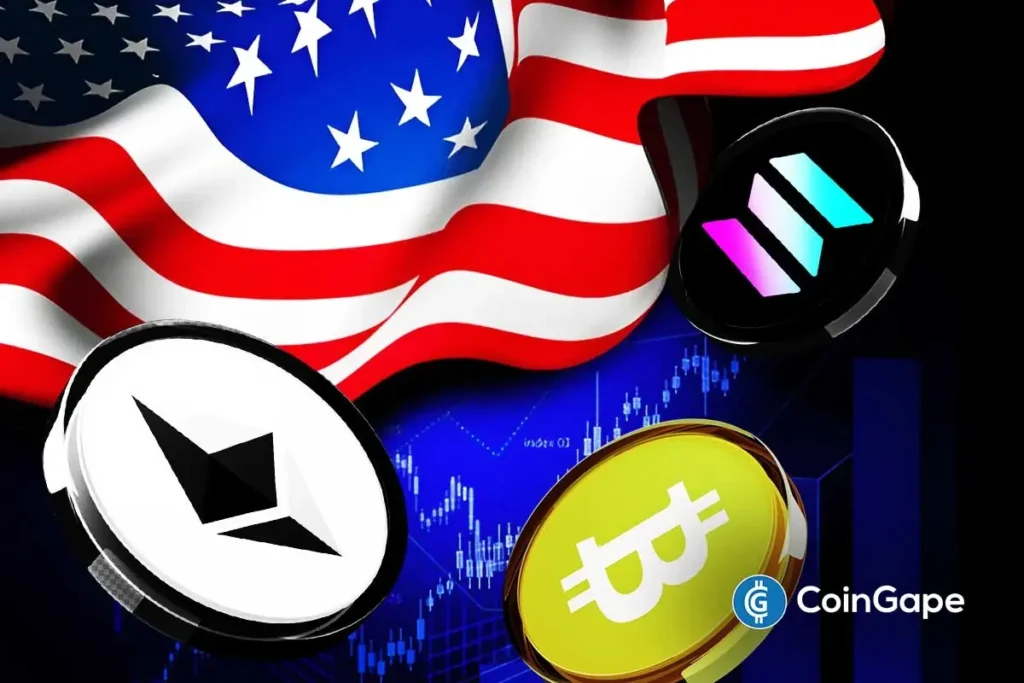U.S. Government Embraces Blockchain Technology for GDP Data Release
In a landmark decision, the U.S. government has begun disseminating Gross Domestic Product (GDP) data through blockchain technology as part of the Trump administration’s latest efforts to embrace cryptocurrency. This initiative involves public blockchains, including leading networks such as Bitcoin, Ethereum, and Solana. It is aimed at enhancing the accessibility and verifiability of crucial economic indicators, thereby promoting transparency in governmental reporting.
The Initiative to Use Blockchain for Economic Data
According to a recent Bloomberg report, the U.S. Commerce Department has adopted blockchain technology for the distribution of GDP data, providing an innovative approach to publishing economic information. While officials clarify that this new blockchain initiative complements existing data channels rather than replaces them, the implications of this shift could revolutionize how economic data is consumed and verified. By utilizing trusted decentralized networks, the government aims to reinforce user confidence in the authenticity of financial data while enhancing accessibility for the average citizen.
A Strategic Move by the Trump Administration
This blockchain update follows Commerce Secretary Howard Lutnick’s declaration that the administration is making significant strides in integrating cryptocurrency into governmental operations. He has publicly stated that under Trump’s leadership as "the crypto president," the United States is positioning itself to become the global capital of cryptocurrency innovation. The push to issue GDP data through blockchains aligns with the administration’s vision, making economic data both innovative and accessible.
Targeting Multiple Blockchains
The Commerce Department’s blockchain initiative focuses on nine different networks, including major players like Bitcoin, Ethereum, and Solana. This initiative is part of a larger strategy to expand the scope of data dissemination even further, promising a future where economic indicators are easy to access and understand. Enhanced transparency is essential not only for economists and analysts but also for average citizens and investors who seek reliable data to make informed decisions.
Addressing Concerns of Manipulation
Interestingly, this initiative comes on the heels of controversy surrounding the July nonfarm payrolls data. President Trump had previously claimed that the data was manipulated, leading to the dismissal of the Bureau of Labor Statistics Commissioner. However, the Commerce Department has officially stated that this move towards blockchain technology is unrelated to those specific issues, emphasizing its dedication to impartial and verified information dissemination. This new system aims to mitigate any future claims of data manipulation, reinforcing public trust in government data.
The Future of Economic Transparency
Overall, the government’s decision to issue GDP data via blockchain marks a significant step forward in modernizing economic data management. By leveraging blockchain’s inherent properties—such as decentralization, security, and transparency—the U.S. government hopes to not only provide more trustworthy data but also engage a wider audience in economic discourse. The expansion of blockchain applications in finance and economics signifies a new era of data management that fosters accountability and open dialogue among stakeholders in the economy.
In summary, the integration of blockchain technology into U.S. governmental operations represents a groundbreaking initiative aimed at enhancing transparency and trust in economic data. With the ambitious goal of positioning the U.S. as a cryptocurrency leader, this initiative sets the stage for increased public interaction with key economic performance indicators, signaling a transformative approach to data reporting.


